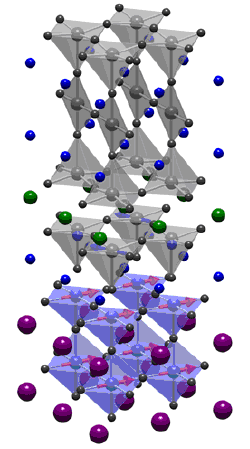The intricate dance of electrons at the interface between ferromagnetic and superconducting oxides that was studied with unprecedented clarity by researchers using an Advanced Photon Source (APS) beamline, has been selected as one of the breakthroughs of the year for 2007 by Science magazine.
Coming in as the fifth (of 10) runner-up in the magazine’s annual survey of cutting-edge science, the researchers from the University of Arkansas, the Max Planck Institute for Solid State Research, Argonne’s X-ray Science Division, and Northern Illinois University used the X-ray Operations and Research beamline 4-ID-C at the APS to “…uncover a reconstruction of electronic orbitals confined at an interface between ferromagnetic and superconducting oxides. This insight has important implications for the behavior at interfaces between materials with strongly correlated electrons,” as noted in the APS Science Highlight “Orbital Reconstruction at a Complex Oxide Interface” (October 15, 2007). Their paper, “Orbital Reconstruction and Covalent Bonding at an Oxide Interface,” was published in the November 2007 issue (16) of Science, and was the subject of a Physics Perspective entitled “When Oxides Meet Face to Face,” by Elbio Dagotto, in that same issue.
In summarizing this work, the Science editors note that, “Sixty years ago, semiconductors were a scientific curiosity. Then researchers tried putting one type of semiconductor up against another, and suddenly we had diodes, transistors, microprocessors, and the whole electronic age. Startling results this year may herald a similar burst of discoveries at the interfaces of a different class of materials: transition metal oxides.”
APS Director Murray Gibson noted, “I applaud the staff of Sector 4 at APS, which is pioneering applications of synchrotron radiation in magnetism, and the scientists who carried out this elegant fundamental science which facilitates new technologies for spintronics.”
The APS is funded by the U.S. Department of Energy, Office of Science, Office of Basic Energy Sciences. Argonne is a U.S. Department of Energy laboratory managed by UChicago Argonne, LLC.

